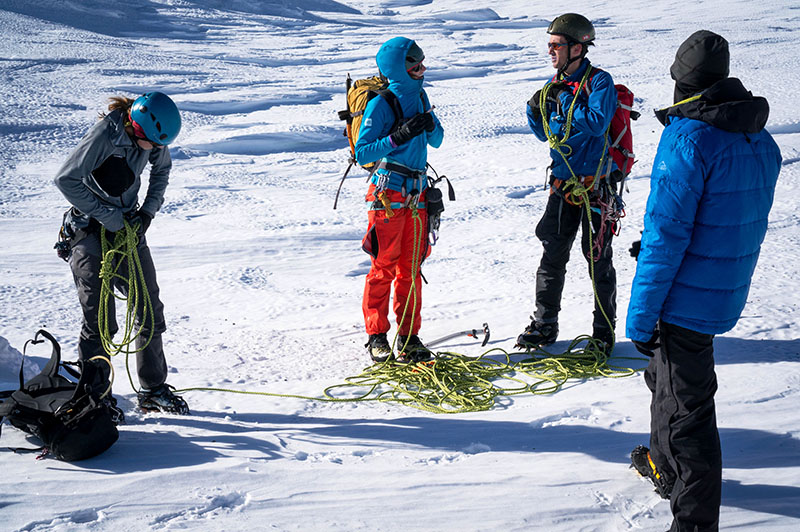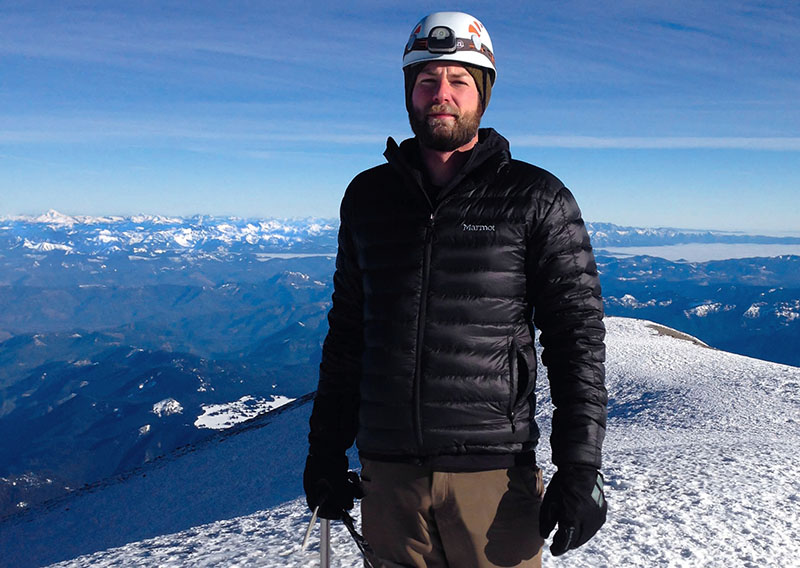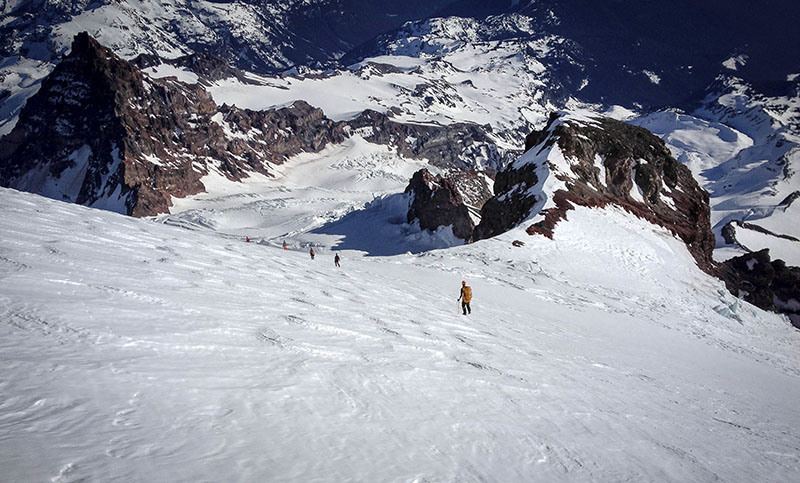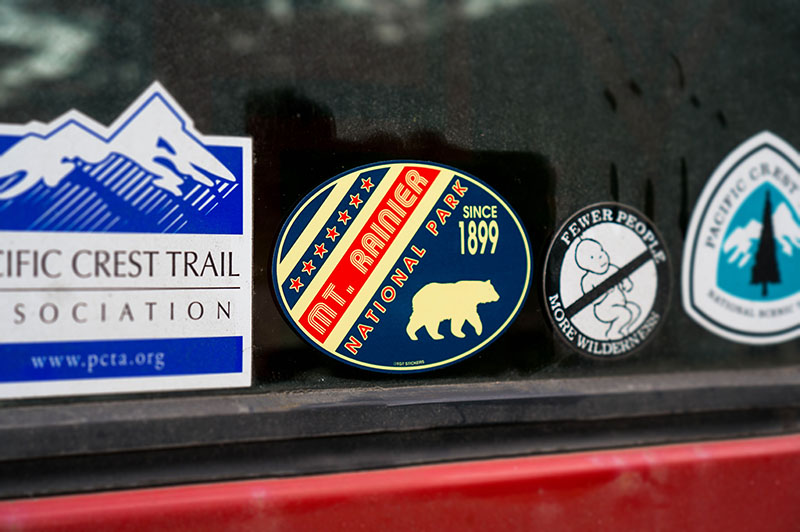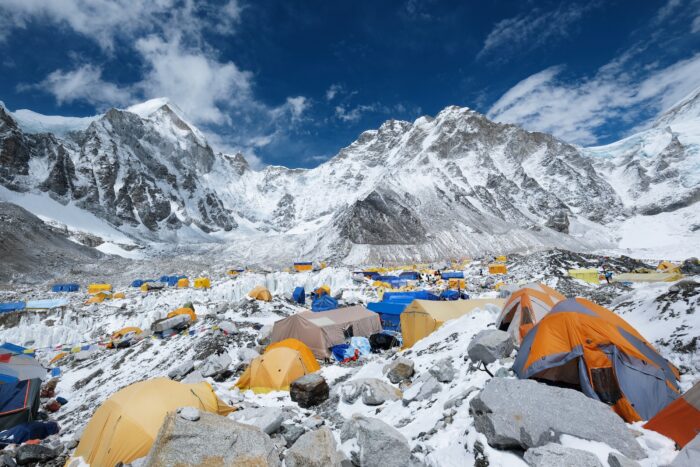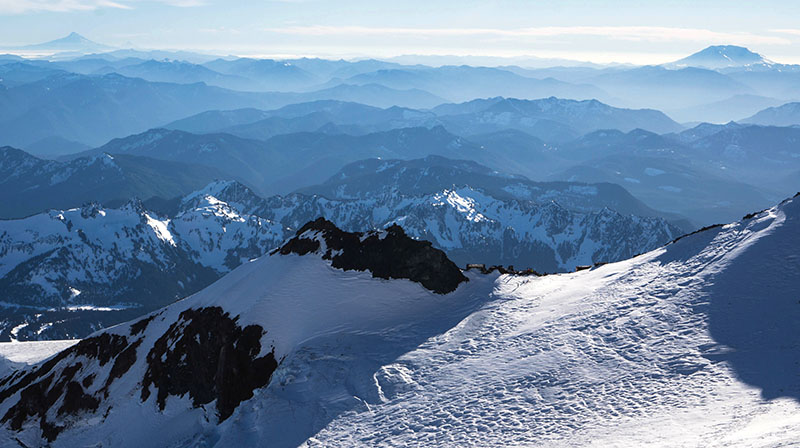
As I reached the base of Gibraltar rock, I looked for the snow ledges that should lead me to the crux of the climb — the steep exit chute that would take me to the upper mountain — but they weren’t there. These were summer conditions on a winter route. I scraped crampons on a thin band of loose scree, hugging the towering mass of Gibraltar with my upper body while scanning the rock with my mitts for anything to hang on to.
I side-stepped out over the exposed cliff face and dug with my frontpoints into the mountain. Sparks burst from underfoot, as metal spikes ground on rock and made the sound of fingernails across a chalkboard. The steep ice and snow of the exit chute would be a welcome sight after this.
Halfway through this perilous shuffle there was a pop accompanied by a moment of weightlessness as a rock pried free of the frozen edge under my points and I started to fall. I had been clutching a bowling ball size projection for balance and it ripped from the wall under my dangling weight.
My right knee caught the edge as I tumbled and then I came to a stop when my left crampon caught another hold. My pants abraded and my knee bled as I hoisted myself back to the edge and listened to the dislodged rock crash its way down into oblivion.
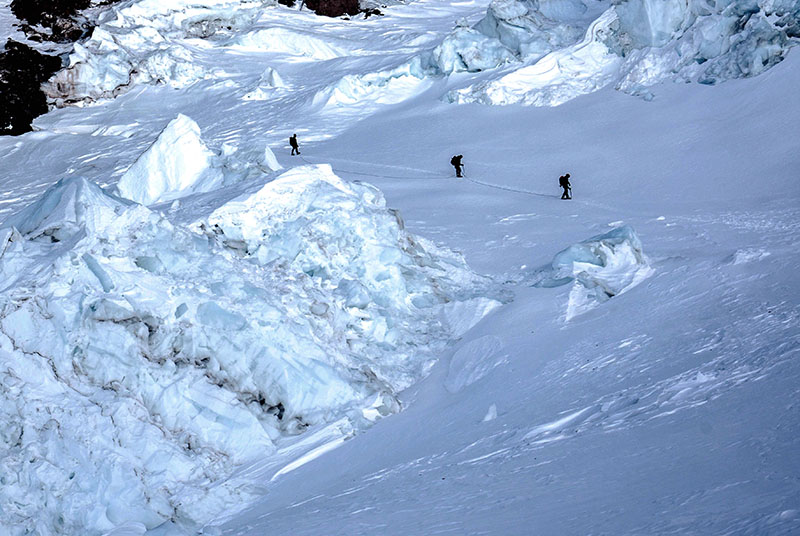
The exit chute was steep and slick and very exposed but also solid and predictable. The swings of my axe planted firmly, and although my crampon points hardly penetrated, I knew I could trust their purchase.
I ascended the long chute quickly to a flat perch above Gibraltar Rock known as Camp Comfort and assessed the upper mountain just as the first pink rays of daylight stretched over the horizon ahead of the sunken sun. The snow was good for crampons and the pitch relaxed sufficiently to continue in piolet canne.
We marveled at the vibrant robin egg blue shadows that stretched from our boots as we began our slow march toward the first of many false summits. The air thinned and my lungs ached as I labored to breathe.

